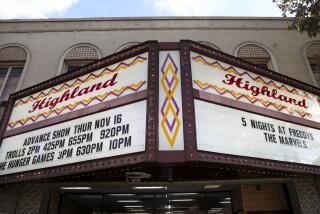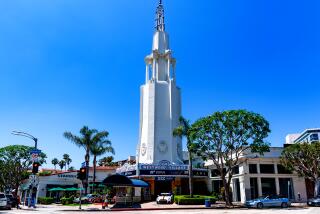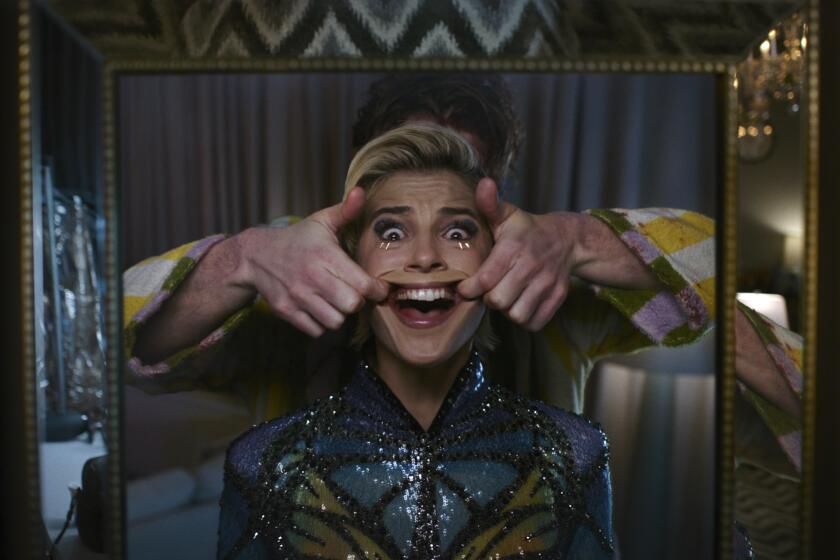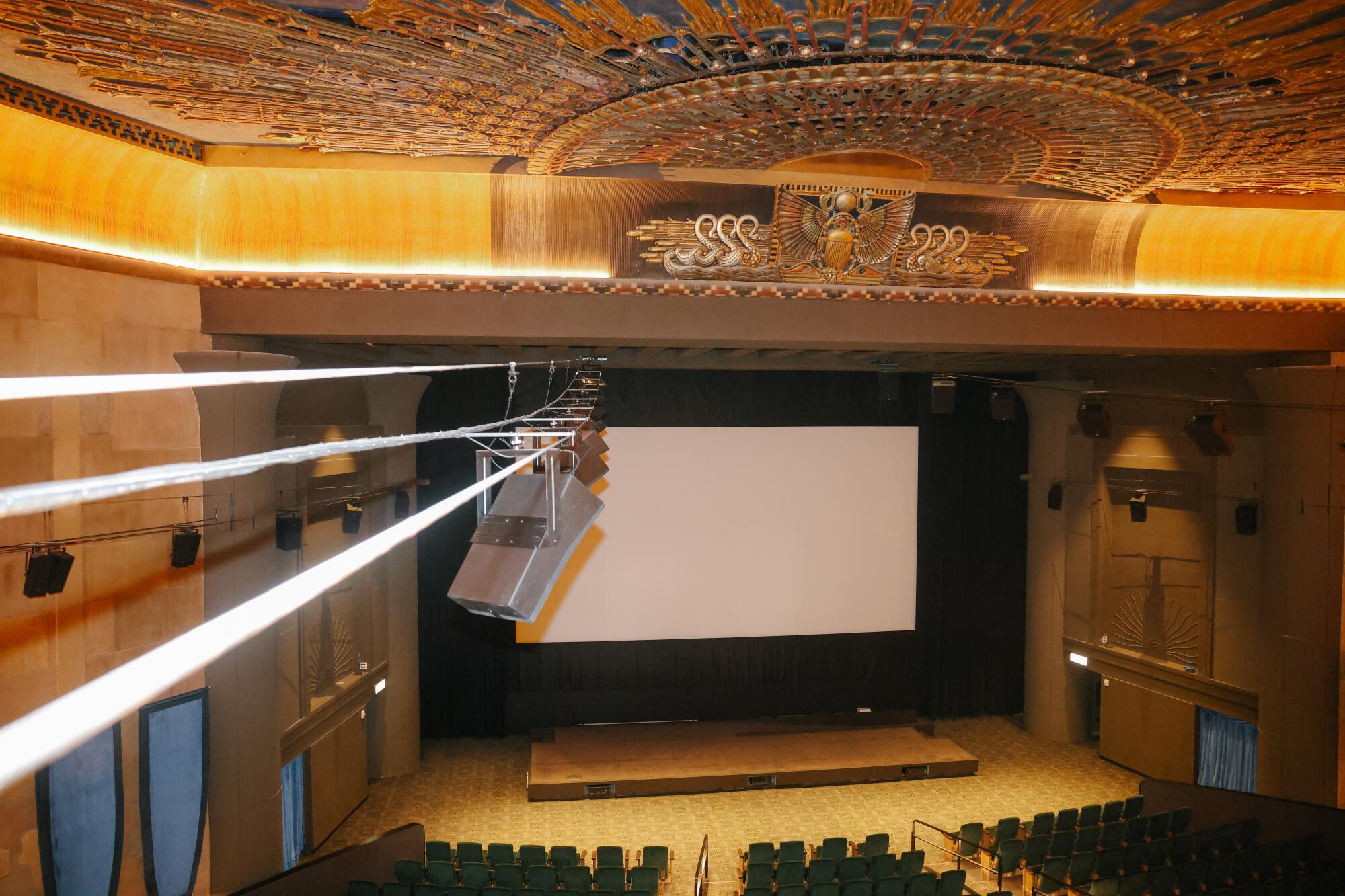
A hundred and one years ago, Hollywood rolled out the red carpet for the very first movie premiere. Men, dressed as Egyptian sentries, patrolled the roof of the theater, carrying rifles that were probably fake — but, given this was a Sid Grauman-staged event, you never know. Everybody who was anybody in L.A. attended, including Charlie Chaplin, who spoke, albeit reluctantly and concisely.
“I pray you that we go on with the picture!” Chaplin said, practically running off the stage right after uttering those few words.
When the Egyptian Theatre opened in 1922 with the extravagant premiere of Douglas Fairbanks‘ “Robin Hood,” it marked a number of beginnings. First movie theater in Hollywood. First red carpet. First film premiere with all the attendant bright lights, flashbulbs and breathless hoopla, a scene that set the stage for every movie opening of the subsequent century.
One of Hollywood’s most iconic movie palaces, the Egyptian Theatre is set to re-open Nov. 9 with a special screening of David Fincher’s “The Killer.”
A master showman, Grauman didn’t do anything small, and for “Robin Hood,” he staged an elaborate prologue before the movie, featuring an orchestra playing arias from Verdi’s “Aida” and cast members, dressed in costume, performing in the “Nottingham Castle Pageant.” Grauman staged these spectacles before every movie playing in one of his theaters. Essentially, it was the silent era’s equivalent of the Super Bowl halftime show.
“Robin Hood” played for six months at Grauman’s Egyptian-themed palace. By the time it left, Grauman had already sold a half-interest in the theater. Five years later, he abandoned it altogether, shifting his energy a few blocks west down Hollywood Boulevard to the Chinese Theatre, a $2 million movie house that would feature temple bells, pagodas and other artifacts shipped in from China. The Chinese — with its forecourt of celebrity handprints and footprints fixed in concrete — remains one of Hollywood’s most popular tourist attractions.
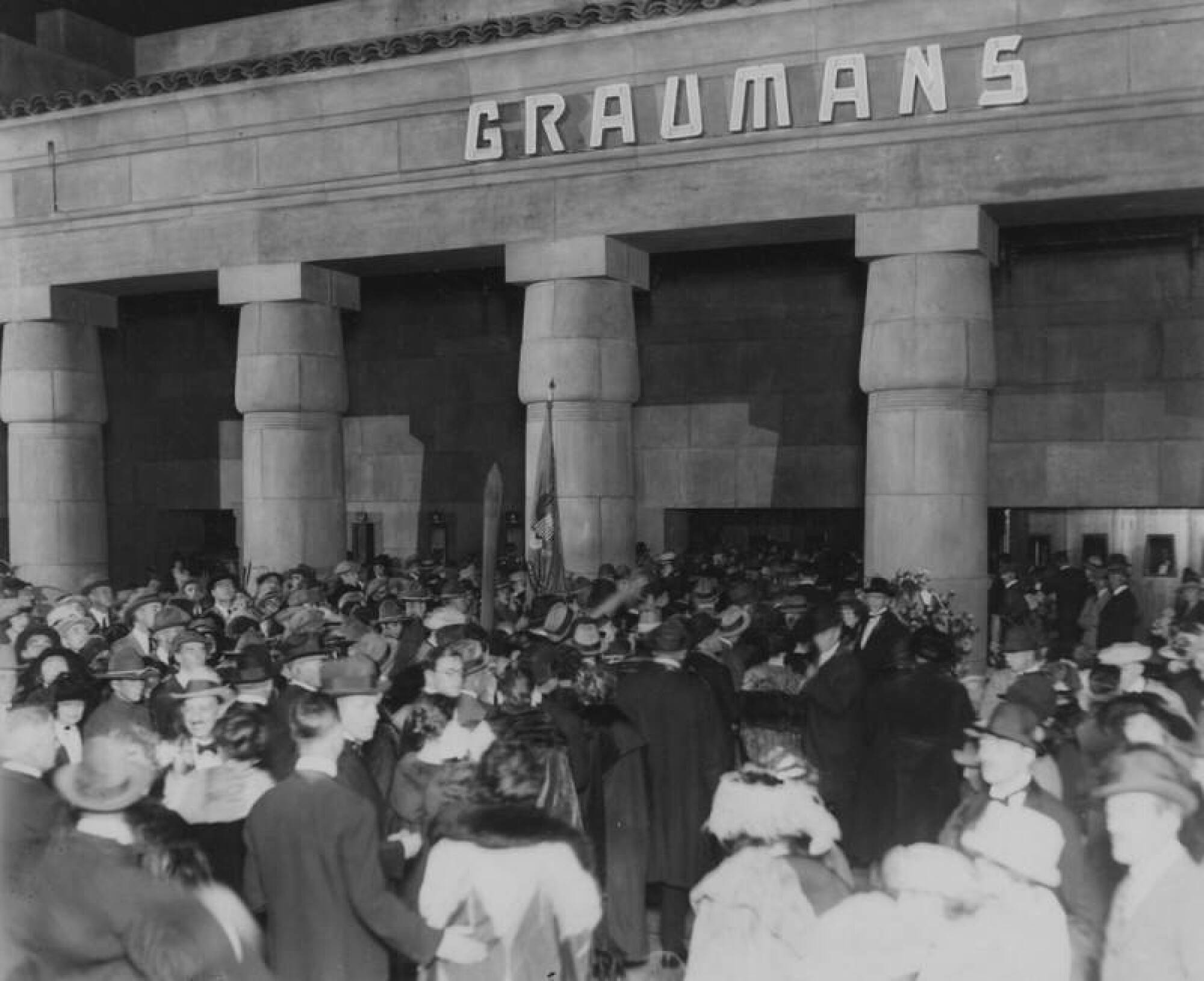
And the Egyptian? After decades marked by cycles of neglect and renewal, it’s set to reopen later this year, newly owned, fully renovated and, paradoxically, operated in part by Netflix, the streaming giant that many in Hollywood view, as J. Robert Oppenheimer called the atomic bomb, as “Death, the destroyer of worlds.” Perhaps that’s being a bit dramatic. Streaming, for many in the business, is just the destroyer of movie theaters.
Yet walking around the still-unopened Egyptian on a recent day, its newly renovated lobby and theater resplendent even behind layers of protective plastic coverings, it’s hard to argue with the time, effort and, yes, money, being poured into this 101-year-old treasure. The hieroglyphics and artwork on the courtyard walls outside match the original theater design, including the sphinxes, ancient markers of mystery and quiet. (Let’s see if that has an impact on today’s moviegoing etiquette.) The interior has been lovingly restored too, with modern lighting and sound upgrades mostly concealed and the ceiling’s sunburst ornamentation shining in its full glory.
Netflix bought the Egyptian from the Los Angeles film nonprofit American Cinematheque in 2020, giving the streamer a West Coast companion to Manhattan’s Paris Theater, the beloved midtown single-screen house it saved in 2019 (and currently leases). Indiewire pegged the purchase price at $14.4 million in a 2020 analysis of public record documents. Cinematheque Chairman Rick Nicita disputes that figure. (“To a non-accountant like me, was that the number?” he says. “The answer is ‘no.’ ”) A Netflix spokesperson declined to comment, citing company policy on discussing financial matters.
Whatever the final cost — and the overall outlay also had to include millions of dollars for seismic retrofitting to meet a city mandate — Netflix now owns the Egyptian and views the theater as an important part of its Hollywood footprint.
“These theaters are in the center of real film-lover communities,” Scott Stuber, chairman of Netflix Films, says. “The business has changed, as we all know, but these theaters have a history that’s vitally important.”
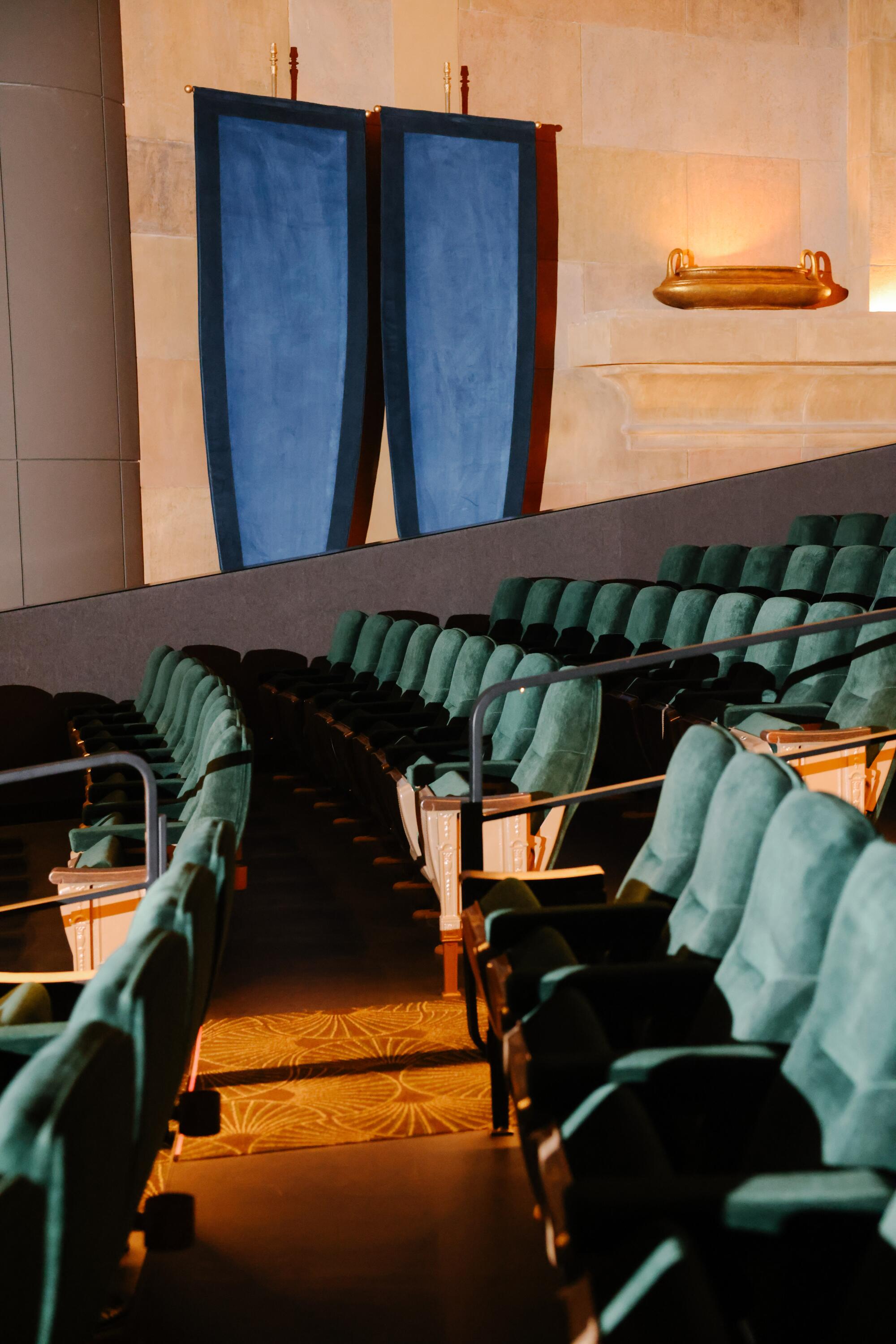
The American Cinematheque will continue to program the Egyptian Fridays through Sundays, with Netflix handling the schedule the rest of the week. (The Cinematheque also programs the Aero Theatre in Santa Monica and the Los Feliz 3.) Nicita calls it a win-win for the nonprofit, noting that the Cinematheque was facing the same fiscal challenges that beset most institutions these days.
“Nonprofits are aptly named,” Nicita says. “The economics were changing and we realized we were going to have financial difficulties in maintaining the standards. The Egyptian is a wonderful movie palace, but it was deteriorating, as buildings do. To keep it at the level we wanted to keep it, we needed cash.”
The Cinematheque bought the Egyptian for a nominal one dollar from Los Angeles’ Community Redevelopment Agency in 1996, four years after the theater closed its doors to the public and two years after the Northridge earthquake, which had left the building with 20-by-40-foot holes in its walls and “in dire shape.” That description comes from architect and preservationist Peyton Hall, who was part of the team, led by architects Craig Hodgetts and Ming Fung, charged with restoring the theater. Hall says that if the Northridge earthquake had been a bit stronger or lasted just a tad longer, the Egyptian’s frame would have collapsed.
But that would be out of character for a theater that has, over the years, withstood ownership changes, inattention and ill-considered remodeling decisions that chipped away at its grandeur. One example: Owing to changing tastes and a perceived need to catch the public’s attention, a huge, vertical marquee was built in 1949, obscuring the 150-foot forecourt off Hollywood Boulevard that led moviegoers through the imposing fake-stone walls.
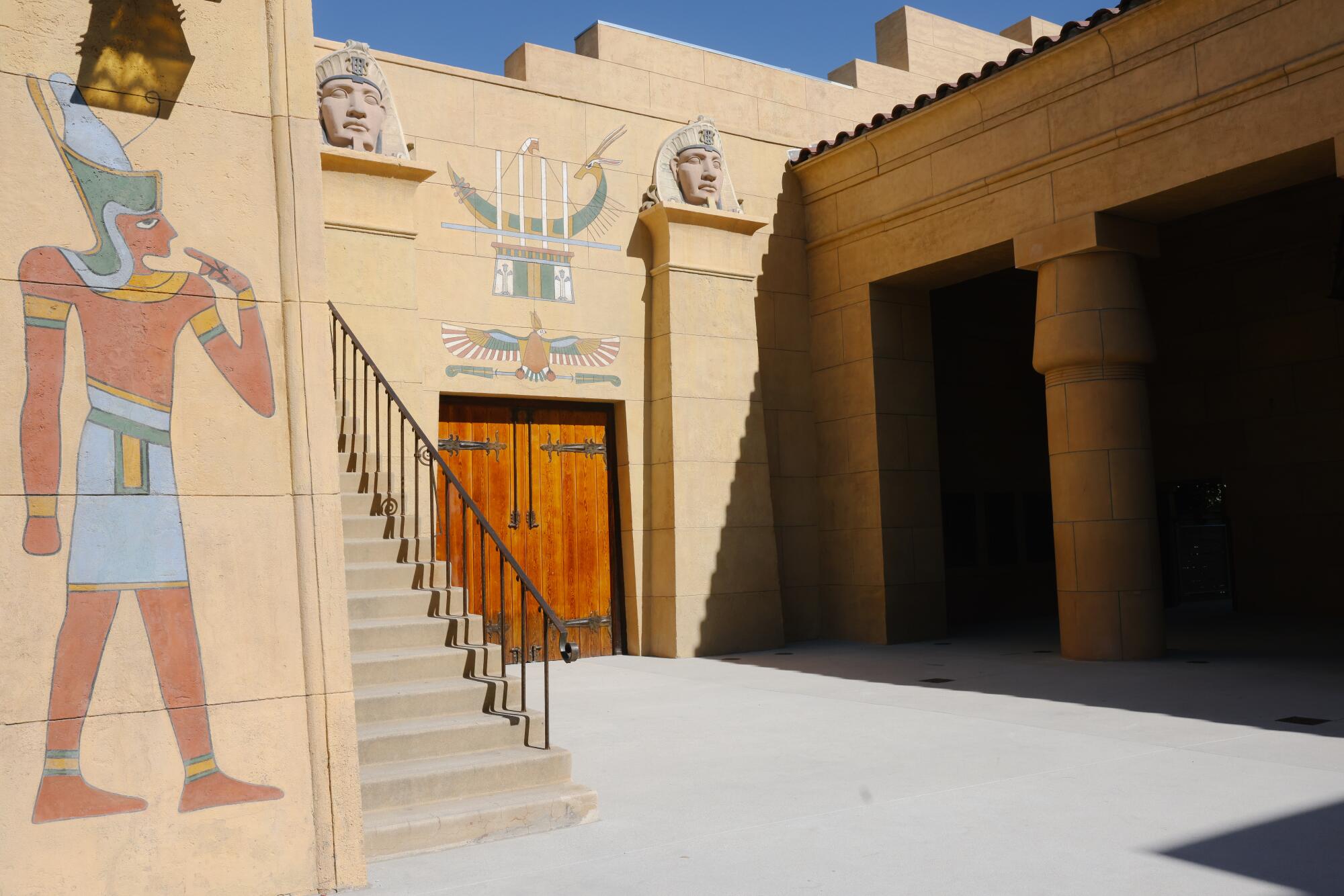
When the Cinematheque reopened the Egyptian in 1998, that marquee was gone, the forecourt restored and the theater reconfigured with a balcony and sliding side panels to enhance the acoustics. The cost: about $14 million, raised from federal earthquake recovery agencies, grants and private contributions. On the first night, the Cinematheque showed Cecil B. DeMille’s 1923 silent epic “The Ten Commandments,” accompanied by a live, 60-piece orchestra. It was 75 years to the day after it had premiered at the theater.
“The hope is that a restored Egyptian Theatre will be a bridge between the cinema district west of Highland and the stores east of Highland,” the Community Redevelopment Agency Hollywood project director Lillian Burkenheim said at the time. “We hope it will bring tourists further east.”
That never really happened. To this day, tourist traffic tapers off east of Highland Avenue with few visitors venturing away from the main hub that includes Disney’s El Capitan Theatre, the Ovation Hollywood (formerly Hollywood & Highland) shopping center and, yes, the Chinese Theatre, which still shows first-run movies in a complex that includes an Imax screen.
Meanwhile, a few blocks east, the Egyptian’s neighbors include tacky souvenir shops selling T-shirts and plastic Oscars, the Church of Scientology’s information center and a handful of downmarket eateries. The Pig ‘n Whistle, remodeled in 1999 to resemble the classic restaurant that opened next to the Egyptian in 1927, closed during the pandemic. (A Times investigation into alleged sexual misconduct in its back rooms may have also been a factor in its demise.) In its place stands a Mexican cantina sporting smiling skulls on its facade. Around here, the stars on the Hollywood Walk of Fame are dingy, dirty and, in some cases, cracked and damaged. The Dolly Parton star situated in front of the Egyptian is in dire need of repair.
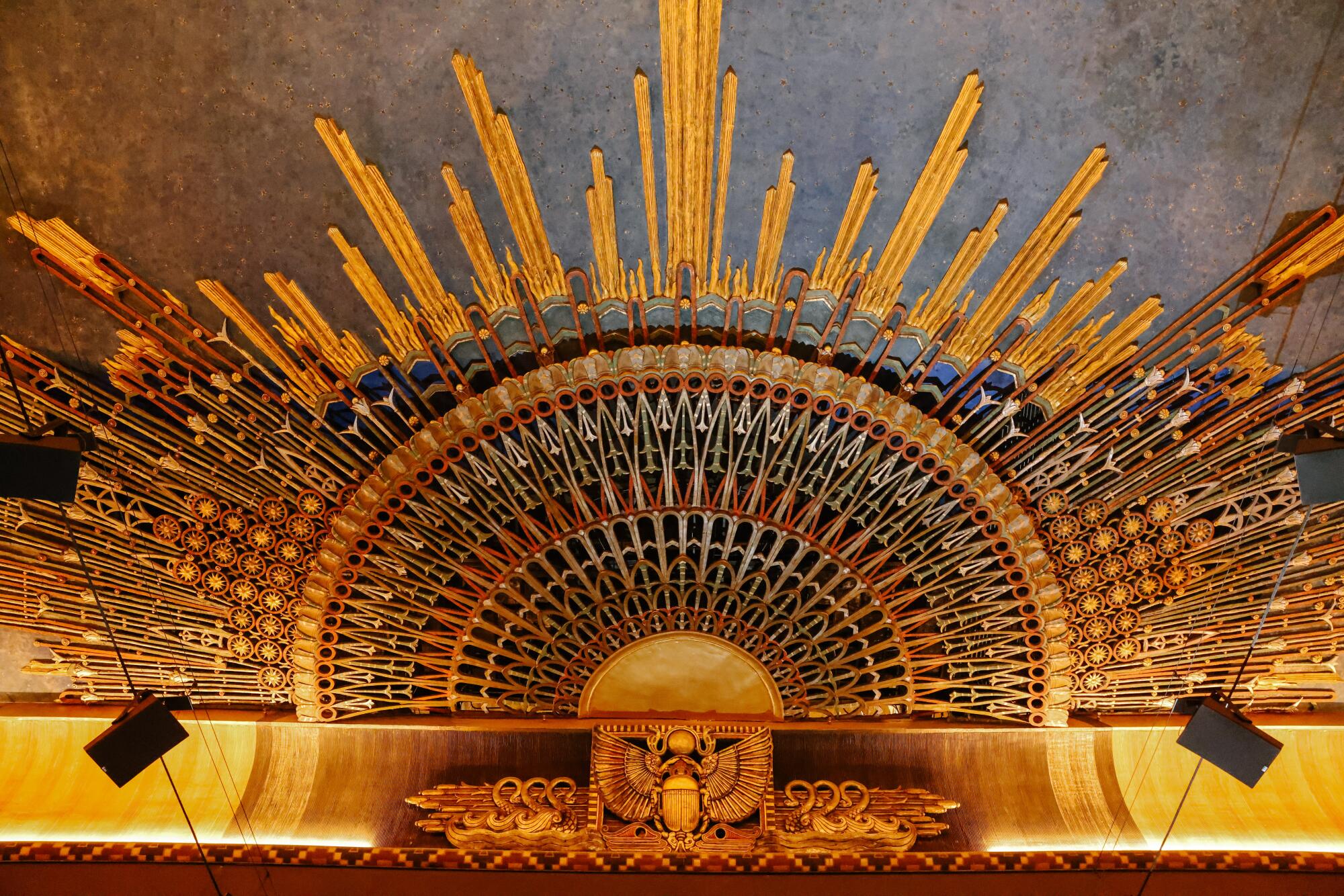
A revitalized Egyptian Theatre could help the neighborhood’s prospects. With the current renovation, Netflix has focused on taking the space back to its original appearance. The balcony and acoustic panels, which had been specifically designed in the late ‘90s to be reversible, have been removed from the theater, which now has a seating capacity of 516, down about 100 seats. The palm trees in the forecourt, another 1998 addition, have also been eliminated, leaving an open space that will, as it was back in Grauman’s day, be filled with props and exhibits from the showcased films.
Those movies will include Netflix’s upcoming awards season contenders, such as Bradley Cooper’s “Maestro,” a biopic focusing on conductor Leonard Bernstein’s marriage to Chilean actress Felicia Montealegre, and David Fincher’s portrait of an assassin in crisis, “The Killer.” In a perfect world— that is, a landscape in which Hollywood isn’t shut down by two crippling labor disputes — these films might be programmed alongside, say, a selection of Fincher’s favorite noir thrillers. But because of the writers’ and actors’ strikes, any thoughts on the Egyptian’s events and slate would be pure conjecture at the moment.
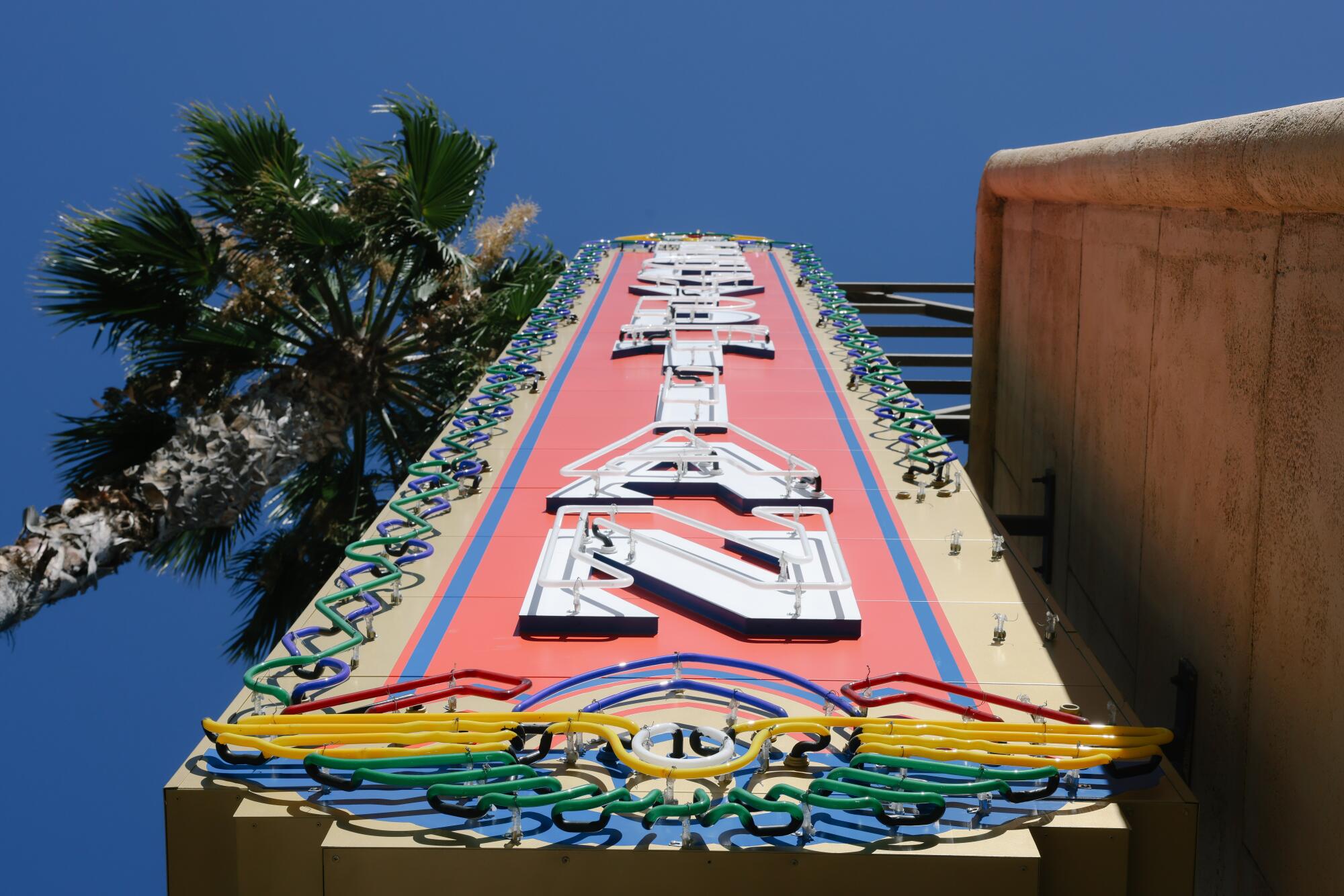
But its doors will open by November, per a Netflix representative, both for films programmed by the Cinematheque and Netflix’s John Vanco (formerly of New York’s esteemed IFC Center), who also curates the streamer’s schedule at the Paris and the Bay Theater in Pacific Palisades. And for architect and preservationist Hall, that reset is an opportunity for people — locals and tourists — to learn about the history of Hollywood.
“After you’ve seen the footprints, I’d tell people to go down the street, turn back the clock five years from the Chinese and see where Sid Grauman started his work,” Hall says. “I overuse the term ‘sacred ground,’ but the Egyptian is one of those spots that really is sacred ground in Los Angeles and the motion-picture industry.”
More to Read
Only good movies
Get the Indie Focus newsletter, Mark Olsen's weekly guide to the world of cinema.
You may occasionally receive promotional content from the Los Angeles Times.



